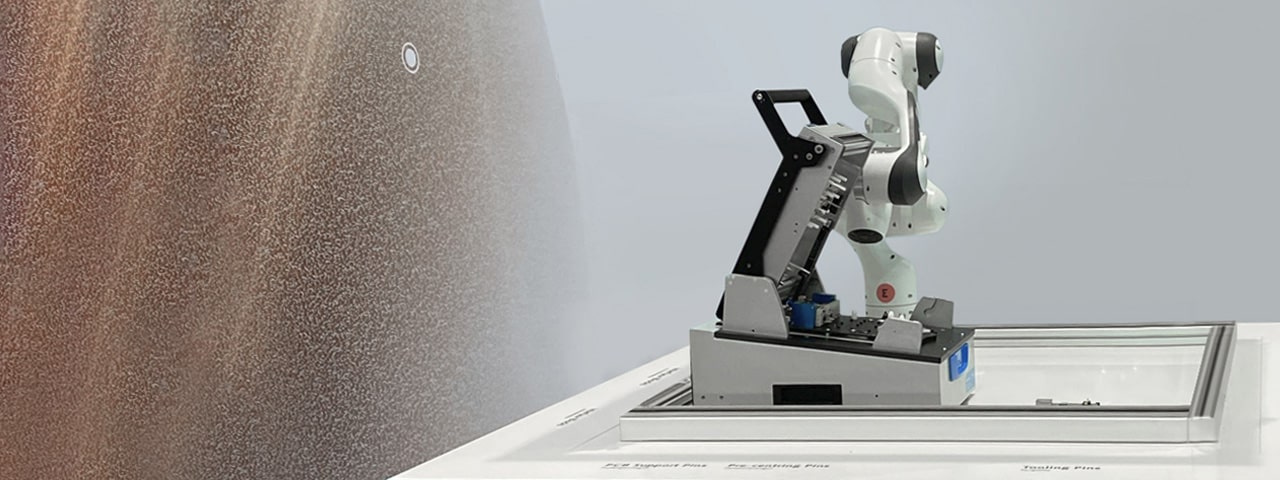PRACTICAL TIP
Using collaborative robots that undertake repetitive and unergonomic tasks, the efficiency and precision of inspection processes can be significantly increased, and the added value of humans strengthened by shifting their focus of activity.
The cooperation of man and machine has proven to be advantageous for numerous manufacturing areas and processes and has become increasingly close as technology progresses. Everything from the intermediate steps of coexistence and cooperation to direct collaboration in the same work area is known as Human-Robot Collaboration (HRC).
So-called cobots are usually lightweight and flexible robots that are designed to perform handling tasks precisely and efficiently while not endangering humans during interaction in shared workspaces. Cobots are increasingly establishing themselves wherever non-ergonomic, highly repetitive tasks need to be performed - for example, in PCB testing, where high quantities (up to several tens of thousands) of printed circuit boards for in-circuit testing need to be inserted into a manual test fixture then removed after testing is complete.
INGUN also relies on this approach and offers corresponding cobot-compatible test devices, which basically support the use of collaborative robots, with the manual test fixtures in the MA xxxx series: This means the opening and closing of the manual test fixture, the positionally precise insertion and the removal of PC-boards can be carried out automatically and reliably.
What are the advantages of using cobots in the inspection process?
- Relief for employees, prevention of accidents
- Higher quality, precision, and speed
- High flexibility when used in limited available space
- Process automation and traceability
- Increased productivity thanks to 24/7 use and operation of several test devices simultaneously
- Reduction of defects due to high precision
MRC is part of the future
Cobots from various manufacturers can be used, which perform tests with a great deal of flexibility and high repeatability in combination with the manual test fixture. When selecting the robot, flexibility and simple programming are particularly important because when changing products, which is a frequent occurrence in today's electronics production, the handling steps also change accordingly, or varying test sequences need to be used.
The technology is constantly being developed; it will play an increasingly important role for advanced and automated test systems in the future. Efficiently automated test fixtures minimise costs, ensure product quality and guarantee high processing accuracy in the test field.
Are you interested in HRC in the field of electronics testing? Contact us directly here:
